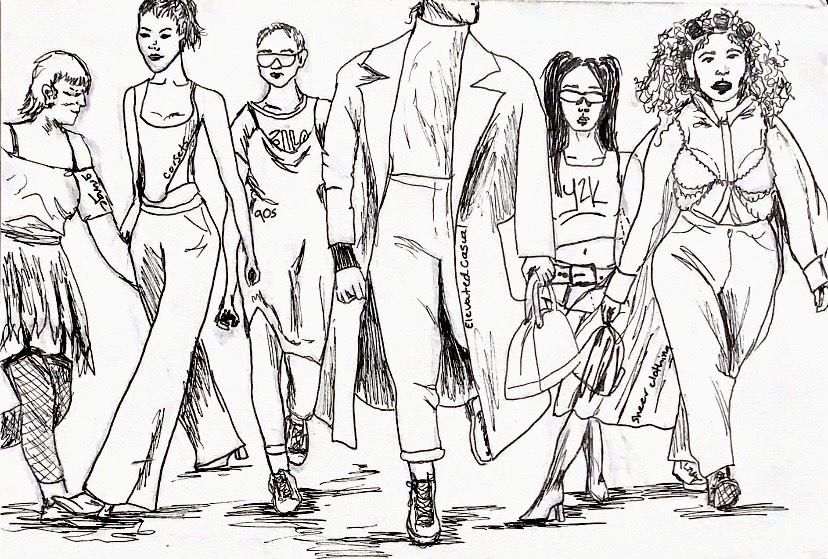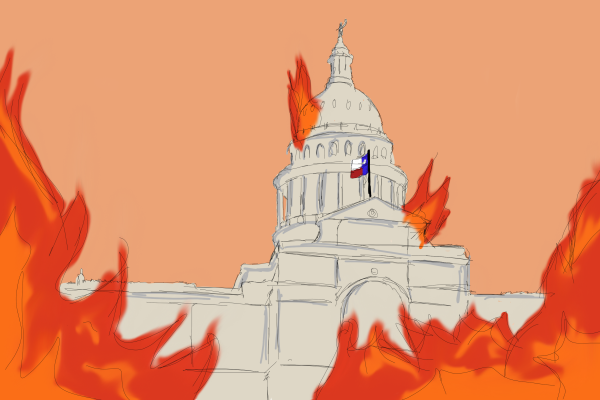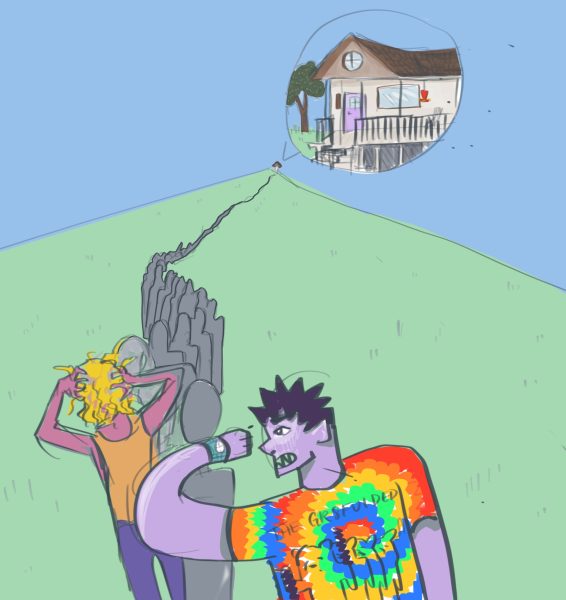A fashion forecast: Another way of policing expression
There are many industries that capitalize on the start of the new year. If you’re a business that isn’t doing so, you’re missing out on profit from the frenzy of changes and resolutions everyone is anticipating in their lives. However, one industry does it best, creating a set of consumer needs that changes seasonally — and no, I’m not talking about produce. The fashion world works through its own set of rules, so much so that there’s a profession dedicated to predicting the trends of what’s in and what’s out — fashion forecasting.
We’ve all seen major fashion magazines like Vogue, Glamour and Women’s Wear Daily (WWD) put out their 2023 fashion predictions, and I’m sure they’ve influenced our need to upgrade our wardrobe. For most consumers, the majority of our trend intel now comes from social media, with influencers showing us “five ways to style a corset” or our favorite Instagram fashion critics breaking down “why vibrant colors are in this fall.” Now more than ever, fashion has become rapidly consumerist, with fashion forecasting firms gathering data to sell to companies such as H&M for profit.
Yet, none of this is new. What is truly damaging is that we homogenize the bodies that we expect to wear certain clothes through commercialized or influencer fashion forecasting. With the rapid capitalization of fashion, there is also a capitalization of bodies and how we assume clothes fit them. The trends that are being forecasted often center on a Eurocentric body type (think Miu Miu miniskirts), creating an aesthetic that all body types are expected to achieve when the majority of the world does not fit this limiting mold.
Fashion that is forecasted based on the marginalization of non-Eurocentric body types makes certain fashion trends inaccessible. This limitation perpetuates a harmful narrative that we must all strive to achieve the Eurocentric body ideal in order to wear certain clothing.
However, there are a lot of individuals with underrepresented bodies, represented more on social media than the runways, who reclaim exclusive fashion trends by participating in the trends to advocate a more representative body normalcy. Influencers like Achieng Agutu or musical artist Lizzo, both of whom have fatter body types, wear the clothing they desire with the same confidence we see skinny models embody on the runway. In this case, by still wearing the fashion trends that are centered around eurocentric bodies, they are challenging exclusivity standards around their body types.
Individuals like Agutu and Lizzo influence fashion forecasting data using a bottom-up approach, with the individual’s fashion trickling up to impact larger brands. This method prompts brands to be more inclusive and encourages society to create brands centered around real bodies across the globe.
Another issue that Westernized fashion forecasting can create is the stifling of non-Western modes of creativity and expression through this consumerist use of fashion forecasting. Many of the large fashion forecasting firms like Worth Global Style Network (WGSN) are located in the Western world. These firms act globally, setting a vision for the Eastern world and centering Eurocentric fashion perspectives as the status quo. However, since these standards are not representative of the clothing that is found in different cultures and countries of the East, Western fashion forecasting data is used by many non-Western cultures to further impose Eurocentric modes of fashion onto their populations.
This erasure can cause many cultures to deem their own prints, fabrics, silhouettes and other forms of artistic and traditional clothing as out of touch or not worthy of the limelight. There needs to be a better fashion forecasting system that allows cultures to embrace their own artistry, which will then also broaden expressions of Western fashion.
The way we have utilized fashion forecasting stifles creativity for the average consumer. We still find fashion as a full-fledged art form on the runway — for example, Coperni’s spray-on dress, JW Anderson’s frog clogs and pigeon clutch or the controversial Dante’s Inferno-inspired Schiaparelli Spring 2023 Couture show. But what of the average consumer? Must we limit ourselves to Birkenstock Clogs and its mass-produced knockoffs?
The current dominant fashion forecasting model continues to typecast expression by upholding normative fashion perspectives. Our generation challenges this through the creation of media on a global but still very individual level compared to the system at large of capitalism based on Eurocentric supremacy. It’s part of a much larger conversation that is manifold, but I still believe in the power of fashion and its ability to subvert and create change.

Hello! I am a junior English and Business major with a minor in creative writing. As an opinions columnist, I’m passionate about exploring anthropological...










